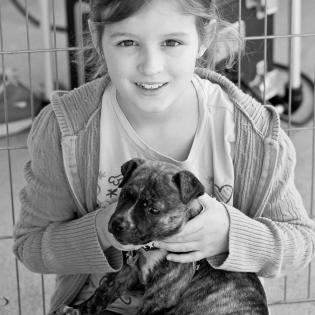What Makes a Hero?
The purpose of this lesson is to identify what it means to be a true hero. The learners will explore character traits of heroes and apply this information to understand why individuals, or organizations might be considered heroes for animal welfare and humane treatment.
The learner will:
- define what it means to be a hero and identify character traits of heroes.
- understand why groups and/or organizations can also be considered heroes for their cause.
- identify heroes who advocate for animal welfare and humane treatment.
- recording and a copy of the lyrics of one of the “hero songs” in the bibliography
- student copies of handout Research Form
- student copies of handout Heroes for Animals "Wall of Fame" Award, plus four additional copies for the groups.
- student copies of handout Heroes for Animals: Research Assignment
- copies of animal-related briefing papers from the Learning to Give website (see Bibliography)
Learners are encouraged to consult their family members for ideas of individuals or organizations to nominate as Heroes for Animals
Hero Songs:
- Wind Beneath My Wings
- Hero by Nickelback
- Hero by Mariah Carey
- Let’s Work Together
- You Say that the Battle is Over
- My Hero is You
Learning to Give white paper for research. Search for the topic from below here:
- American Society for the Prevention of Cruelty to Animals (ASPCA)
- Anna Harris Smith
- Dian Fossey
- Henry Bergh
- Henry Spira
- Jane Goodall
- John Denver
- John Muir
- John Walsh
- Ryan Newman
- Temple Grandin
- Tony La Russa
- Velma B. Johnson
Instructions
Anticipatory Set:
Listen to one or more of the hero songs from the Bibliography. Have the learners brainstorm characteristics of a hero (any gender or even a nonprofit organization that does heroic work). Define a hero as a "person noted for courageous acts and/or nobility of purpose." Brainstorm examples from present day or history (healthcare workers during the pandemic; firefighters in a disaster; Jane Goodall).
Ask and discuss in what ways nonprofit organizations like the American Society for the Prevention of Cruelty to Animals (ASPCA), United Nations, or a social welfare organization might also be considered to be heroes.
Ask the students if they know what a hall of fame is and have them share some examples. Tell them that a Hall of Fame is like a museum that honors people for outstanding achievements in a particular field.
Tell the students that today they are going to create a “Wall of Fame” that honors individuals or organizations that have been influential in promoting humane treatment of animals and animal welfare.
Working in groups of two or three students, students read a Learning to Give briefing paper and complete a “Wall of Fame” research form and award plaque for their individual. (handouts) Research Form and Heroes for Animals: “Wall of Fame” Award
Students cut out and display their “awards” and allow the class time to read and discuss the awards.
Tell the students that they will be creating two more of these award plaques in the following lesson. One for a person or organization of their choice, and one for themselves after doing a service or advocacy project to promote animal welfare.
Research assignment: Choose a person or organization who deserves to be on the “Heroes for Animals: Wall of Fame” because of their work in promoting animal welfare. Give them the handouts: Research Form, Heroes for Animals “Wall of Fame” Award, and Heroes for Animals Research Assignment. Encourage the learners to talk to their friends and family to get their advice about a person or organization that supports humane treatment and welfare for animals for the homework assignment.
Learner involvement in the class discussions and group work will provide the major portion of the assessment for this lesson. Consideration could also be given to the work ethic displayed during the research portion of this lesson.
Philanthropy Framework
-
Strand PHIL.II Philanthropy and Civil Society
-
Standard PCS 01. Self, citizenship, and society
-
Benchmark MS.4 Describe the characteristics of someone who helps others.
-
-
Standard PCS 02. Diverse Cultures
-
Benchmark MS.4 Identify civil society organizations that protect and speak for minority viewpoints.
-
-
Standard PCS 07. Skills of Civic Engagement
-
Benchmark MS.1 Identify and research public or social issues in the community, nation or the world related to the common good. Form an opinion, and develop and present a persuasive argument using communication tools.
-
Benchmark MS.4 Analyze information to differentiate fact from opinion based on the investigation of issues related to the common good.
-
-
-
Strand PHIL.III Philanthropy and the Individual
-
Standard PI 01. Reasons for Individual Philanthropy
-
Benchmark MS.1 Define and give examples of the motivations for giving and serving.
-
Benchmark MS.10 Identify reasons why historic figures acted for the common good.
-
Benchmark MS.7 Identify and give examples of an individual's reserved power to act.
-
-
-
Strand PHIL.IV Volunteering and Service
-
Standard VS 01. Needs Assessment
-
Benchmark MS.1 Identify a need in the school, local community, state, nation, or world.
-
-
